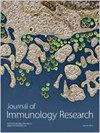腹主动脉瘤中 miRNA/Pyroptosis 相关分子调控轴的构建:转录组数据结合多种机器学习方法及实验验证的证据。
摘要
背景:腹主动脉瘤(AAA腹主动脉瘤(AAA)是腹主动脉局部永久性增宽,具有主动脉破裂的潜在致命风险。最近的一些研究强调了热蛋白沉积(一种促炎症程序性细胞死亡)在 AAA 发生、发展和破裂过程中的关键分子调节作用。然而,尚未全面阐明热蛋白沉积在 AAA 中的潜在作用及其上游微 RNA(miRNA)。研究方法通过搜索基因表达总库(GEO)数据库,分别下载了mRNAs(GSE7084、GSE57691和GSE98278)和miRNAs(GSE62179)的表达谱以及相应的临床特征。连续收集了 15 个 AAA 和 10 个正常血管样本的表达谱,用于体外实验和后续分析。利用各种机器学习技术来识别枢纽性热休克相关基因(PRGs),从而建立了一个称为 PRG 分类器的预测模型。定量实时聚合酶链反应(qRT-PCR)、免疫印迹(WB)和酶联免疫吸附试验(ELISA)被用来确认枢纽PRGs的表达。在 GEO 和医院队列中全面评估了该模型的诊断和预测能力。然后,研究人员探讨了与 AAA 发病和破裂有关的关键免疫细胞浸润和分子通路,以及它们与热蛋白沉积的关联。最后,利用 TargetScan 数据集构建了与 miRNA/枢纽热蛋白沉积相关的分子调控轴,并通过功能缺失试验对其进行了进一步的探索。结果差异分析、富集得分分析和主成分分析(PCA)显示,与热蛋白沉积相关的分子在很大程度上参与了 AAA 的发生。利用多种机器学习算法,整合了八个关键的PRGs(天冬氨酸胱氨酰特异性蛋白酶[CASP]1、浸润淋巴细胞[IL]1B、IL18、IL6、NOD-、LRR-和含吡咯啉结构域蛋白[NLRP]1、NLRP2、NLRP3和肿瘤坏死因子[TNF]),建立了一个PRG分类器。PRG 分类器显示出强大的诊断能力(曲线下面积 [AUC] > 0.90),为两个 GEO 数据集提供了临床见解,并分别有效地区分了小 AAA 和大 AAA、选择性稳定 AAA (eAAA) 和破裂 AAA (rAAA)。值得注意的是,在医院队列中,PRG 分类器与 AAA 风险因素(高血压病史、舒张压、甘油三酯水平和动脉瘤直径)之间存在实质性的正相关。此外,免疫细胞浸润和功能富集分析表明,PRG 分类器/PRGs 与 M2 巨噬细胞浸润、活化的树突状细胞以及细胞膜脱氧核糖核酸(DNA)传感途径和色氨酸代谢的富集分数有显著关联,可能介导 AAA 的发生和破裂。最后,根据 TargetScan 数据集的 90 个差异表达 miRNAs(DEmiRNAs)和 8 个中枢 PRGs,构建了 hsa-miR-331-3p/TNF 调控轴,其中上调 hsa-miR-331-3p 的表达可显著降低 TNF 和 CASP1 蛋白水平。结论通过多种机器学习算法开发并验证了一个包含八种 PRGs 的预测模型(PRG 分类器)。该模型可作为诊断 AAA 和评估疾病严重程度的有效工具。细胞膜 DNA 传感通路和 hsa-miR-331-3p/TNF 相互作用轴的确定可能是 AAA 治疗的关键靶点,有助于深入了解其潜在的发病机制。Background: Abdominal aortic aneurysm (AAA) represents a permanent and localized widening of the abdominal aorta, posing a potentially lethal risk of aortic rupture. Several recent studies have highlighted the role of pyroptosis, a pro-inflammatory programed cell death, as critical molecular regulators in AAA occurrence, progression, and rupture. However, the potential effects of pyroptosis in AAA and its upstream microRNA (miRNA) have not been comprehensively clarified. Methods: Through a search of the gene expression omnibus (GEO) database, the expression profiles of mRNAs (GSE7084, GSE57691, and GSE98278) and miRNAs (GSE62179) and corresponding clinical features were downloaded, respectively. Expression profiles of 15 AAA and 10 normal vascular samples were consecutively collected for in vitro experimentation and subsequent analysis. Various machine learning techniques were employed to identify hub pyroptosis-related genes (PRGs), leading to the development of a predictive model termed the PRG classifier. Quantitative real-time-polymerase chain reaction (qRT-PCR), western blot (WB), and enzyme-linked immunosorbent assay (ELISA) were used to confirm the expression of the hub PRGs. The diagnostic and predictive capabilities of the model were comprehensively evaluated in GEO and hospital cohorts. Then, the crucial immune cell infiltration and molecular pathways implicated in the initiation and rupture of AAA and their association with pyroptosis were explored. Lastly, a miRNA/hub pyroptosis-related molecular regulatory axis was constructed using the TargetScan dataset, which was further explored through loss-of-function assays. Results: Differential analysis, enrichment score analysis, and principal component analysis (PCA) revealed that pyroptosis-related molecules were significantly involved in the occurrence of AAA. Utilizing multiple machine learning algorithms, eight key PRGs (cysteinyl aspartate specific proteinase [CASP]1, infiltrating lymphocyte [IL]1B, IL18, IL6, NOD-, LRR- and pyrin domain-containing protein [NLRP]1, NLRP2, NLRP3, and tumor necrosis factor [TNF]) were integrated to establish a PRG classifier. Demonstrating robust diagnostic capabilities (area under curve [AUC] > 0.90), the PRG classifier provided clinical insights across two GEO datasets and effectively differentiated small AAA from large AAA, elective stable AAA (eAAA), and ruptured AAA (rAAA), respectively. qRT-PCR, WB, and ELISA verified the mRNA and protein expression of the hub PRGs. Notably, in hospital cohorts, a substantial positive link was unveiled between the PRG classifier and AAA risk factors (hypertension history, diastolic pressure, triglyceride levels, and aneurysm diameter). Furthermore, immune cell infiltration and functional enrichment analysis revealed significant associations of the PRG classifier/PRGs with M2 macrophage infiltration, activated dendritic cells, and enrichment scores of the cytosolic deoxyribonucleic acid (DNA) sensing pathway and tryptophan metabolism, potentially mediating AAA onset and rupture. Finally, based on 90 differentially expressed miRNAs (DEmiRNAs) and eight hub PRGs through TargetScan dataset, a hsa-miR-331-3p/TNF regulatory axis was constructed, wherein upregulation of hsa-miR-331-3p expression significantly reduced TNF and CASP1 protein levels. Conclusion: A predictive model (PRG classifier) incorporating eight PRGs through multiple machine learning algorithms was developed and validated. This model may stand as a potent tool for diagnosing AAA and assessing disease severity. The identification of the cytosolic DNA sensing pathway and the hsa-miR-331-3p/TNF interaction axis may represent crucial targets for AAA treatment, offering deeper insights into its potential pathogenesis.

 求助内容:
求助内容: 应助结果提醒方式:
应助结果提醒方式:


